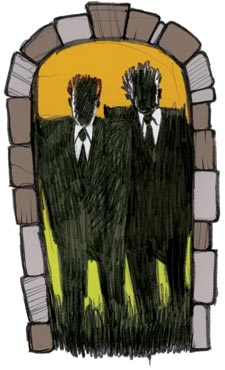Julie has selected Tamar: A Novel of Espionage, Passion, and Betrayal by Mal Peet as our October 2015 read.
ABOUT THE BOOK
From acclaimed British sensation Mal Peet comes a masterful story of
adventure, love, secrets, and betrayal in time of war, both past and
present.When her grandfather dies, Tamar inherits a box
containing a series of clues and coded messages. Out of the past,
another Tamar emerges, a man involved in the terrifying world of
resistance fighters in Nazi-occupied Holland half a century before. His
story is one of passionate love, jealousy, and tragedy set against the
daily fear and casual horror of the Second World War — and unraveling it
is about to transform Tamar’s life forever.
From School Library Journal
Starred Review. Grade 8 Up—This lengthy Carnegie
Medal-winning novel is masterfully crafted, written in cinematic prose,
and peopled by well-drawn, multidimensional characters. Intense and
riveting, it is a mystery, a tale of passion, and a drama about
resistance fighters in the Netherlands during World War II. The story
unfolds in parallel narratives, most told by an omniscient narrator
describing the resistance struggle, and fewer chapters as a narrative
told by 15-year-old Tamar, the granddaughter of one of the resistance
fighters. The locale and time shift between Holland in 1944 and '45 and
England in 1995. The constant dangers faced by the resistance fighters
as well as their determination to succeed in liberating their country
from German occupation come vividly to life. Dart, Tamar, and Marijke
are the main characters in this part of the book. Their loyalty to one
another and the movement is palpable though love and jealousy gradually
enter the story and painfully change the dynamics. Other characters
jeopardize the safety of the group and intensify the life-threatening
hazards they face. Peet deftly handles the developing intrigue that
totally focuses readers. After her beloved grandfather commits suicide,
modern-day Tamar is determined to undercover the mystery contained in a
box of seemingly unrelated objects that he has left for her. Peet keeps
the story going back and forth in time, and readers must wait till the
end of this intricate book to understand fully what happened to these
courageous people. This is an extraordinary, gripping novel.—
Renee Steinberg, formerly at Fieldstone Middle School, Montvale, NJ Copyright © Reed Business Information, a division of Reed Elsevier Inc. All rights reserved.
--This text refers to an out of print or unavailable edition of this title.
*Starred Review* It was her taciturn but beloved
grandfather, William Hyde, who gave Tamar her strange name. But in 1995,
when she was 15, he committed suicide, leaving her to wonder if she
knew him at all. Later, when she opens the box of War II memorabilia
that he left her, she's struck by the need to find out what it means,
who he really was, and where she fits in. Tension mounts incrementally
in an intricate wrapping of wartime drama and secrecy, in which Tamar
finds her namesake and herself. Forming the backbone of the novel are
intense, sometimes brutal events in a small Dutch town in Nazi-occupied
Holland and the relationship between the girl's namesake, a member of
the Dutch Resistance; Dart, a code operator assigned to help him; and
Marijke, the love of his life. Peet's plot is tightly constructed, and
striking, descriptive language, full of metaphor, grounds the story.
Most of the characters are adults here, and to some readers, the Dutch
history, though deftly woven through the story, will seem remote. But
Peet's sturdy, emotionally resonant characterizations and dramatic
backdrop will pull readers forward, as will the secret that gradually
unravels. Despite foreshadowing, the outcome is still a stunner. Winner
of Britain's 2005 Carnegie Medal, this powerful story will grow richer
with each reading.
Stephanie ZvirinCopyright © American Library Association. All rights reserved
--This text refers to an out of print or unavailable edition of this title.
ABOUT MAL PEET
Mal Peet was an English author and illustrator best known for
young-adult fiction. He has won several honours including the Carnegie
Medal and the Guardian Prize, British children's literature awards that
recognise "year's best" books
He recently passed away.


